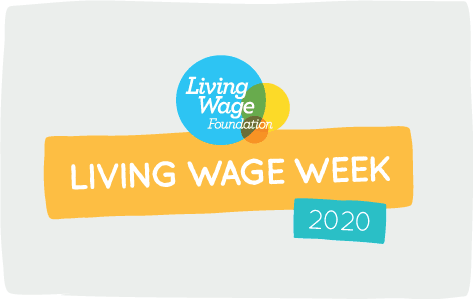
Real Living Wage increases to £9.50 in the UK and £10.85 in London as cost of living rises
Over 250,000 people working for almost 7,000 real Living Wage Employers throughout the country are set for a vital pay boost as the new Living Wage rates rise to £9.50 across the UK (20p increase), and £10.85 in London (10p increase), supporting workers and families through the pandemic. The Living Wage rates are the only rates independently calculated based on what people need to live on.
We work closely with the Living Wage Foundation because we know being out of work, being in low-paid employment and/or being in the low-pay-no-pay cycle, has a significant long-term negative impact on your health and your wellbeing. This can be not having enough money to buy sufficient food and eat healthily, stress and a lack of control. People who are unemployed or experiencing low pay are more likely to have physical and mental health issues, as well as decreased self-esteem and low pay is a major factor in why people in the most disadvantaged neighbourhoods die younger than in most affluent areas (eight years in England and Wales and up to 13 years in Scotland).
Research conducted by Cardiff Business School has demonstrated the significant impact of the Living Wage campaign since the start of the pandemic. Over 250,000 workers have benefitted from an additional £200 million since the start of lockdown, including 130,000 key workers. Since 2011 over £1.3bn in extra wages has gone to workers and families through the Living Wage.
The UK rate is 78p per hour more than the government minimum wage (for over 25s) and the London Living Wage is £2.13 per hour higher. A full-time worker paid the new £9.50 real Living Wage will receive over £1,500 in additional wages annually compared to the current Government minimum. For a full-time worker in London this figure rises to over £4,000.[3]
The announcement comes as new research by the Living Wage Foundation has demonstrated the scale of low pay during the pandemic, with 5.5 million jobs (20.3% of employee jobs) still paying less than the real Living Wage. Northern Ireland had the highest proportion of jobs paying below the Living Wage (25.3%) and Scotland the lowest (15.2%). [2]
Laura Gardiner, Living Wage Foundation Director, said: “It’s an incredibly challenging time for us all, but today’s new Living Wage rates will give a boost to hundreds of thousands of UK workers, including thousands of key and essential workers like cleaners, care workers, and delivery drivers who have kept our economy going.
“Since the start of the pandemic employers have continued to sign up to a real Living Wage. During Living Wage Week it’s right that we celebrate those employers that have done right by workers and families, providing them with much needed security and stability even when times are hard. These are the employers that will allow us to recover and rebuild from this crisis.”
The Trust supports the Living Wage Foundation through Living Wage Funders and the Living Wage Places scheme, which has seen Dundee become the first city recognised for its plans to build a Living Wage City. Since then, there has been a wave of interest from areas across the UK, including the UK’s first Living Wage Building in Brixton, and Glenrothes – the first town recognised for its plans to become a Living Wage Town.
Living Wage cities, towns and boroughs are recognised for creating a Living Wage Place when a group of local employers, led by the council and including other anchor institutions such as hospitals, universities, transport providers, cultural and sport organisations, agree to become Living Wage Employers and work together on a plan to increase accreditations locally.
The places in which we live have a huge impact on our health. The Trust is supporting the scheme in Cardiff, Salford and the London Borough of Southwark to improve pay for thousands of low paid workers, train community organisers to build local collective power and support local partnership working to create systemic change. In April, Southwark became the first London Borough to receive recognition for Making a Living Wage Borough.
Whilst progress has been affected by the pandemic, action groups have adapted and the crisis has strengthened their resolve to create Living Wage Place.
Find out more about Living Wage Places in how good wages can be at the heart of the recovery of local economies in an event on Tuesday 11 November, including the launch of a video telling the story of Salford's Living Wage Place journey. https://www.livingwage.org.uk/living-wage-week-2020-events
Find out more about the Trust’s involvement in Living Wage Funders and its impact
2] A full report on the number and proportion of employee jobs paid below the Living Wage (and the methodology for calculating these) is available on demand.
[3] These calculations are based on working for 37.5 hours a week, for 52 weeks. £9.50 x 37.5 x 52 = £18,525 for someone earning the real Living Wage and £21,157.50 for someone earning the London Living Wage of £10.85, compared to £17,004 for a full-time worker, over the age of 25 (and therefore eligible for the National Living Wage), earning the government’s new National Living Wage rate of £8.72.
A full research briefing is available from the Resolution Foundation on key factors behind the rate calculation and its rise this year.
